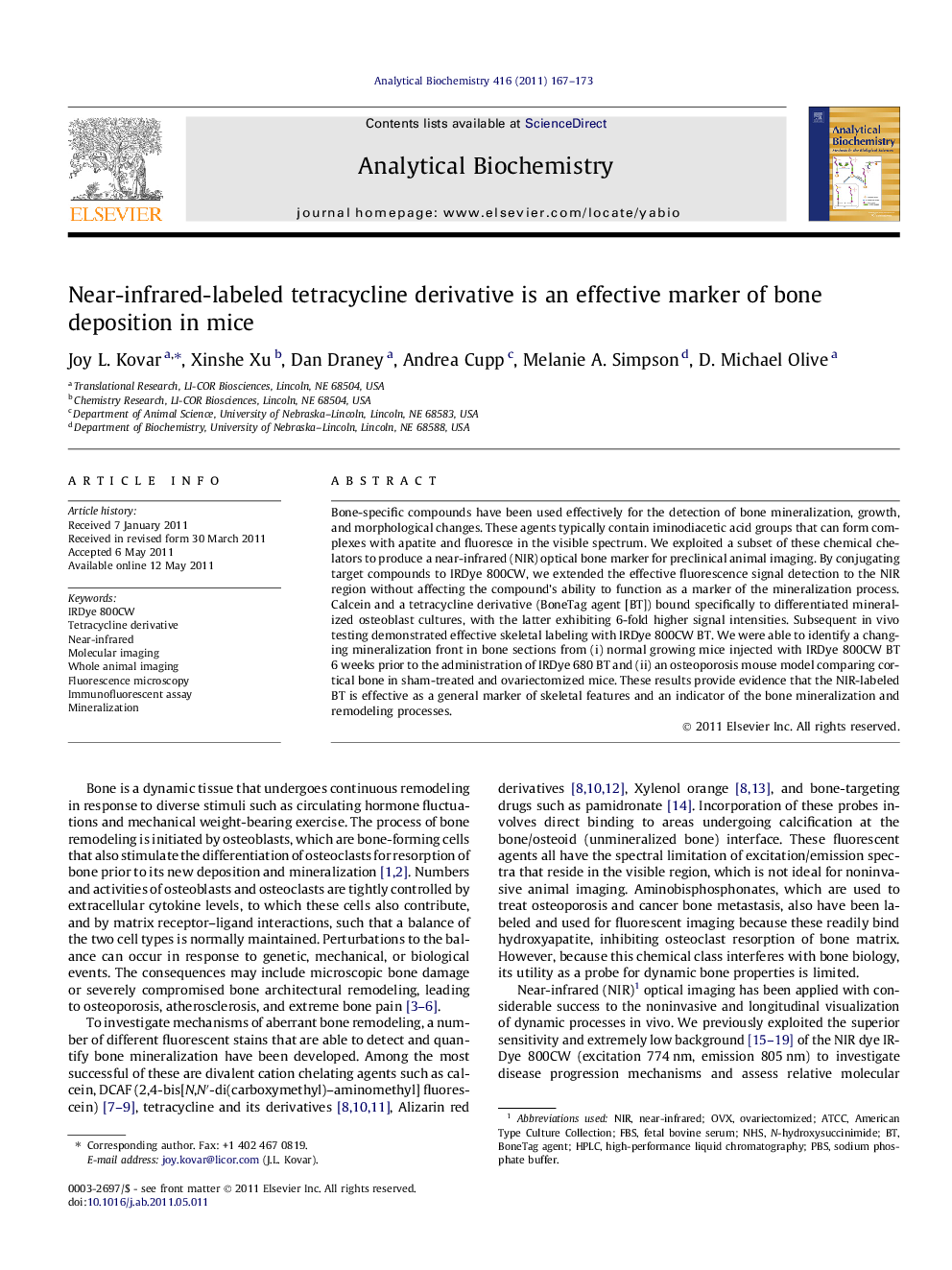| Article ID | Journal | Published Year | Pages | File Type |
|---|---|---|---|---|
| 1174421 | Analytical Biochemistry | 2011 | 7 Pages |
Bone-specific compounds have been used effectively for the detection of bone mineralization, growth, and morphological changes. These agents typically contain iminodiacetic acid groups that can form complexes with apatite and fluoresce in the visible spectrum. We exploited a subset of these chemical chelators to produce a near-infrared (NIR) optical bone marker for preclinical animal imaging. By conjugating target compounds to IRDye 800CW, we extended the effective fluorescence signal detection to the NIR region without affecting the compound’s ability to function as a marker of the mineralization process. Calcein and a tetracycline derivative (BoneTag agent [BT]) bound specifically to differentiated mineralized osteoblast cultures, with the latter exhibiting 6-fold higher signal intensities. Subsequent in vivo testing demonstrated effective skeletal labeling with IRDye 800CW BT. We were able to identify a changing mineralization front in bone sections from (i) normal growing mice injected with IRDye 800CW BT 6 weeks prior to the administration of IRDye 680 BT and (ii) an osteoporosis mouse model comparing cortical bone in sham-treated and ovariectomized mice. These results provide evidence that the NIR-labeled BT is effective as a general marker of skeletal features and an indicator of the bone mineralization and remodeling processes.
